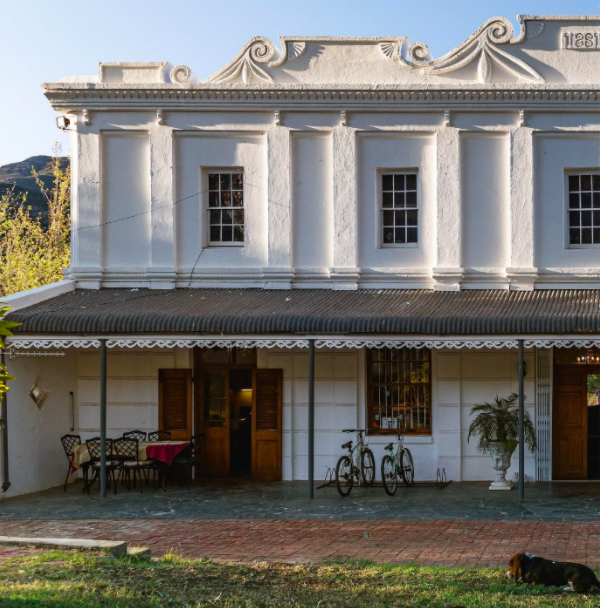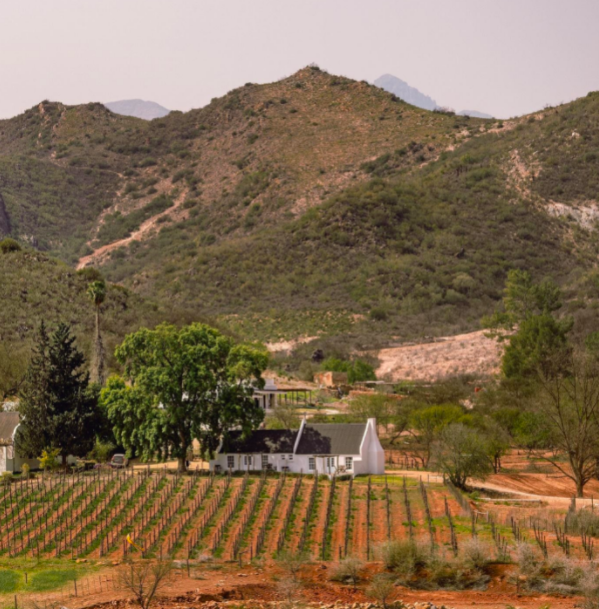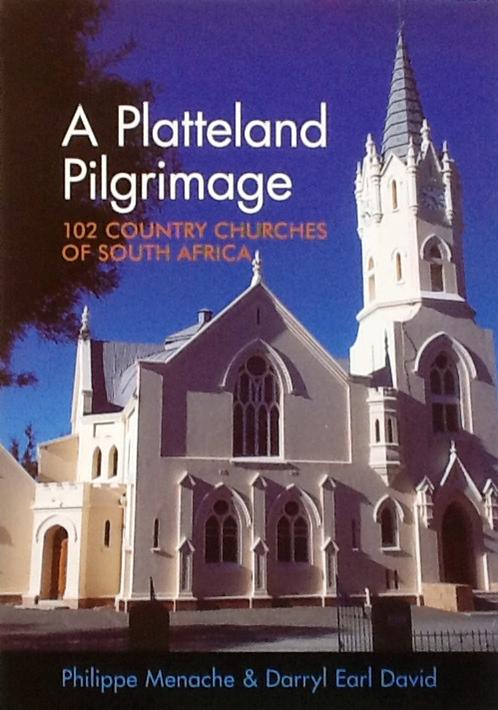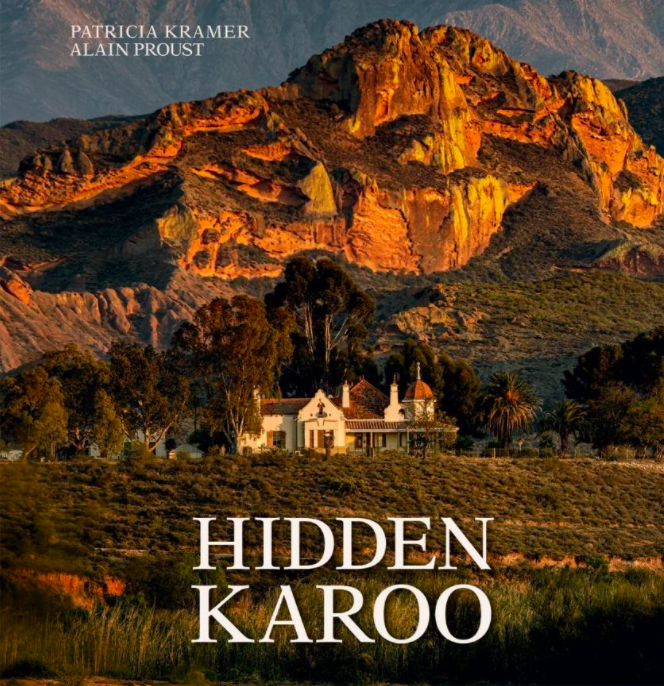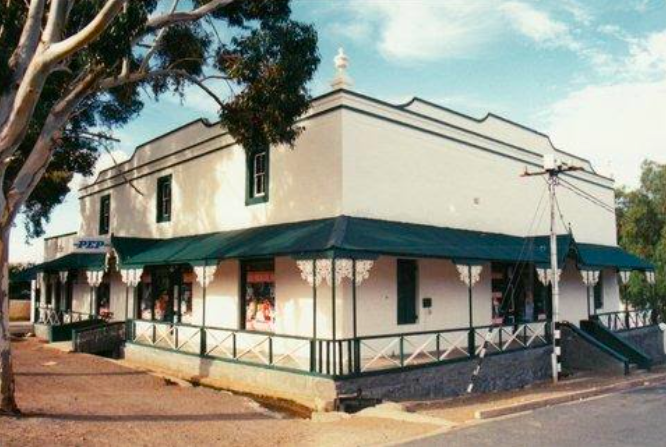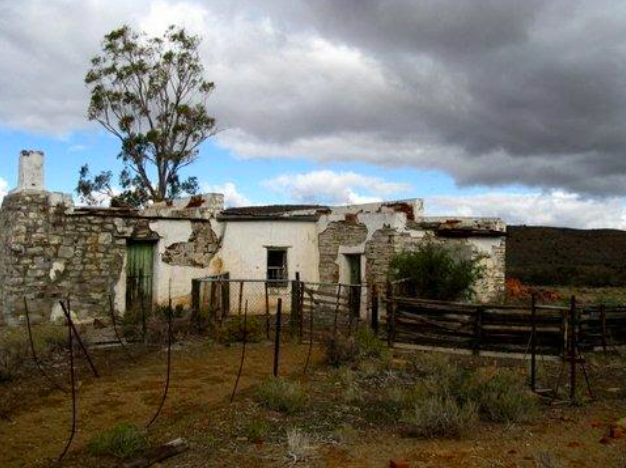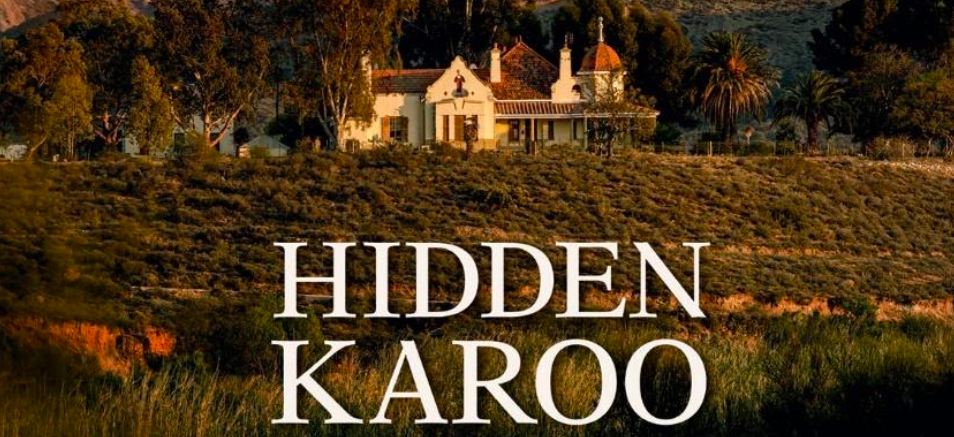
There is always some excitement in our household when a new Hidden book arrives. Hidden Karoo is out and arrived by courier last week. I start by saying it is an impressively rich book of photographs supported by a sound commentary. This book celebrates the heritage, architecture and antique treasures to be found in the Karoo.
The first impression is that this book aims to sell the Karoo as a tourist destination with each photograph carefully posed and stage set. If the Karoo is not already on your bucket list of tourist destinations here is an adventure to the heart of South Africa waiting for a departure date. Forget the distances, this is the book to make the traveller stop, pause, explore and discover the richness of the history, heritage and architecture of the Karoo. The photographs must surely be rated as among the best of architectural images of Karoo buildings. None of the Karoo is in Pat Schultz’s 1000 Places to See Before you Die but this book makes up for that glaring hole in world travel, shares the secrets of the Karoo and draws you to the Cape backways and small towns.
Goedemoed on Koo Valley Road outside Montague (Alain Proust)
Alain Proust ‘s photographic work is well known and he has established a reputation as a foremost South African photographer of places, architecture and heritage. Once again his photographic collection does not disappoint. Alain teamed up with Paul Duncan to illustrate Hidden Johannesburg and Hidden Cape Town and then with Johan Swart for Hidden Pretoria - all published by Struik Lifestyle. This book is the latest in the series and is a worthy companion volume. Tackling the towns and country places of the Karoo takes the series in a new direction, as the previous volumes have been about cities.
De Kombuys Farm, foothills of the Swartberg, near the Cango Caves (Alain Proust)
Patricia Kramer knows the Karoo intimately and recently published a book on the corbelled buildings of the Karoo. Pat is an archaeologist with an interest in vernacular architecture. Her particular focus is on the architecture of the Karoo - the unusual buildings to be found on the farms and in the small towns. She covers the churches with flair as pre-eminent expressions of Karoo culture. Her captions and panels of information accompanying the photos are fulsome, interesting and informative. She has written an excellent text and many of the stories are often anecdotal and entertaining. The Wellwood fossils and why Broom and the Rubidge family are important or the story of Tafelberg Hall near Middelburg and the early Herbert Baker farm house. There is a good balance of the visuals and descriptions.
Michael Spicer, former Chairman of Anglo American and now on the Board of Governors of Rhodes University has written a contextual and useful introduction with a promotional marketing thrust. I wondered if Spicer was the initiator of this project and whether the Karoo should have been chosen for Hidden book treatment rather than Durban, Pietermaritzburg or Bloemfontein which I think should all be visited and photographed by Alain Proust.
There is a reasonable though by no means comprehensive bibliography and list of source material at the back – and that could lead the reader to try other writers on the Karoo - classics such as Eve Palmer, Lawrence Green, Guy Butler’s memoirs or Olive Schreiner. A worthy companion volume to this book is Chris Schoeman’s The Historical Karoo (Zebra Press, 2013) which concentrates on towns and people. A couple of omissions that I think should have been in the bibliography are Guy Butler’s works (e.g. Tales from the Old Karoo (AD Donker, 1989). Two of Hans Fransen’s books are listed but there was also another The Old and the New which is about the architecture of the Little Karoo. The efforts made by Philippe Menache and Darryl Earl David to document South African Country Churches in 3 volumes should have been dropped in as there are quite a few Karoo churches covered in those books. The Sophy Gray churches were covered by Desmond Martin in his 2005, The Bishop’s Churches and should have received a nod – it’s an important book on church history, and has a useful glossary and some of the Gray churches feature in Hidden Karoo. There was also Barrie Biermann who wrote on Karoo and Cape architecture and should be remembered. A new feature in books is now to list online internet sources – a positive.
Book Cover
The Karoo is really the open sky middle part of the country, the geographical expanse of deep Cape country. In recent years it has become fashionable to escape the cities and seek solitude and a quiet life in a country town or go stargazing. Many artists love the Karoo - Calitzdorp has a colony of ceramicists and painters; or discover the art of strange Helen Martins in Nieu-Bethesda in the Owl House. There is a mention and a photograph of the work of Willem Boshoff in Richmond.
The Karoo is the sort of place that you either love or hate. The distances, the aridity, the heat, sparse vegetation, the sheep make for a certain monotony as you drive through it on a journey from Johannesburg and Cape Town. The Karoo fills a vast part of South Africa with the N1 running straight through from Colesburg to Worcester. Travellers intent on getting from Johannesburg to Cape Town by car as rapily as possible quickly become tired of the endless kilometres of aridity, boring veld and plenty of sheep. It is far too easy to miss the spectacular landscape and these photographs are an aid to opening our eyes to really seeing beauty in the vistas, passes, mountain ridges and wind pumps.
I like to break the journey to Cape Town half way and spend a night in Hanover and as twilight falls there’s an hour to take a walk and discover a town in the heart of the Karoo. A double page photo spread captures the essence of the town and its architecture - the Dutch Reformed Church, a distant view of the small hill Trappieskop with its monument to the first magistrate of the town, and in the foreground a typical Karoo cottage with a side gable and a raised stoep.
I am interested in Hanover because the church dating back to 1908 was designed by the architect Kallenbach and his partner Reynolds, though the fact that the Hanover church was designed by Johannesburg architects is not mentioned. The Hanover Hotel dates from 1880 but was given an art deco makeover in 1940. Olive Schreiner lived in Hanover for six years and if you think that The Story of an African Farm was the great unsurpassed South African novel then this book is for you.
For booklovers, Richmond has an annual Book Festival and has been transformed into a book town by Darryl Earl Davids and Dr Peter Baker. Here is motivation enough for stopping and exploring, taking your time; better still take a week or two to discover the Karoo. Head to Oudtshoorn and have fun touring an ostrich farm and an ostrich feather palace and see why nothing goes to waste in the ostrich. Some of the lesser known homesteads in the Oudtshoorn area are included in the Little Karoo chapter. Our family are hot water spring enthusiasts and travel the world in search of healing mineral waters. There are a few such springs in the Little Karoo and my recommendation is to try the water at Warmwaterberg or at Calitzdorp. Calitzdorp also produces first rate port and dessert wines. Beaufort West is also a good place to pause and see the first town hall built in the Cape Colony. The photo of the intricate mechanism of the 19th century clock in the Town Hall is exquisite. Visit the Karoo to appreciate that it was the right decision to move South African astronomical research, the SKA and the principal Observatory to Sunderland in the Karoo.
The cover photograph shows the farm of Rietfontein against the backdrop of the Red Stone Hills - near Calitzdorp - a great choice and worth taking a closer look at the interior photos of the farm house which was built in Art Nouveau design and has been in the Potgieter family for more than a century. This is definitely a farm I would love to visit but as this is a family home dropping in as the curious tourist may not earn a welcome. Perhaps this book with its stunning cover will be my passport to entry.
Book Cover
My next destination has to be Prince Albert and it is surely the double page spread of the dream-like view of the village against the backdrop of the Swartberg Mountains giving a siren call. I am curious about Prince Albert because I once found a series of late 19th century photographs, framed and together making up a panoramic view of the town. I connected with Dr Judy Maguire (one of the most knowledgeable people around on the Karoo and warmly thanked by the authors). We corresponded, I did some research and the outcome was an article for The Heritage Portal and the gift of the panorama to the Prince Albert Museum (click here to read). It turned out that I had found some of the earliest photographs of the town. Judy has generously sent me a few photographs to illustrate this review. All the photographs in the Hidden Karoo book are by Alain Proust and, as mentioned, he delivers an exceptional quality of work. But this book reminds me how important it is for all who are interested in heritage to photograph what you see around you – it is tomorrow’s heritage.
Pep Stores Prince Albert (Judy Maguire)
It is not a book about demographics or worrying too much about whether the migration of country people to the towns has impoverished the rural communities. The message is fairly upbeat that the Karoo has life, there are new settlers and enough new people arriving to reverse the slow death of old towns and villages. Is this really the situation? What about issues of land claims? What are the pros and cons of possible fracking in the Karoo?
What does it mean for heritage when for example the Graaff-Reinet Dutch Reformed Church, a modern church built in the later 20th century (versus the earlier church dating from the 1880s) to accommodate 2500 worshipers but today has a membership of fewer than 200? The authors emphasize that their book is about the Karoo at a moment in time. Heritage is fragile and I am concerned that newcomers to the country life may not stay the course. By that I mean, put down roots, have families and ensure that the heritage of the Karoo that we see today survives into the future for another three hundred years. Heritage preservation in the countryside and on farms is a challenge when farms are amalgamated and an old farm house falls into decay and disrepair. Many heritage buildings are neglected. There is almost no mention of the hidden architecture of the townships and farm workers cottages which have great charm but what about the future of such properties and their occupants?
Karoo farmhouse in decay (Judy Maguire)
There are very few photographs of Karoo people in this book. Christian Barnard came from Beaufort West and his ashes returned there but there is no photo of the glamourous doctor. When the objective is to showcase a place there is a tendency to remove the messiness of real life - there is not a single photograph of an ugly roadside advert. Countryside, wildflowers, geology, buildings of all types and interiors are set before us as an almost never ending feast. There is a danger that this type of book could err on the side of a property glossy sales weekend supplement or a travel agent brochure. Many photos are picture perfect. I concede the visual appeal comes from the lush photographs. Every photograph in the book is evocative whether of a glowering saffron sky or the green moss on a tombstone.
The book looks handsome; the printing is high quality with lovely semi-matt paper which means there is no glaring shine off the paper. The font is readable and unlike a new fashion in book production, the publisher did not go for white font on coloured background or printing over faded images which makes it difficult to read text. The end papers show the night sky over Sutherland. The book is bound with a substantial hard cover. It is a good length 304 pages, with 180 full colour photographs. It could be a guide to take on a journey to the Karoo but perhaps better still to savour in an armchair.
I found the book difficult to navigate because there is no index. You read something about an interesting person or a specific building, but how do you find the place or the person again? There is a map with a key to eight areas of the Karoo which match the chapters. It seems logical and is certainly a way of achieving balance and ensuring that all areas of the Karoo are featured. I am almost in mind to make up my own index at least of the important towns and significant houses and churches.
One of the difficulties of photographing and writing about hidden places is that many of these properties are not open to the public; they are private homes or farms. I am grateful that the authors have a key to unlock so many hidden Karoo glories.
The book leans towards presenting the Karoo as an appealing, frozen in time museum; but it is a museum worth taking time to enter and to study. You will be rewarded when you are transported into this land of stars, rocks, desert, merino sheep, ostriches, fossils and bright night skies. It’s a book that conveys mood, a sense of place and the magical atmosphere of the Karoo.
The eye of the photographer leads you into the houses, churches, hotels, and farms to discover its hidden treasures. I recommend purchasing this glorious coffee table book. It is a beautiful book and it will give hours of pleasure.
2021 Guide Price: Normal retail price is R470. Johannesburg Heritage Price is R400. To order email Eira Bond - mail@joburgheritage.co.za.
Kathy Munro is an Honorary Associate Professor in the School of Architecture and Planning at the University of the Witwatersrand. She enjoyed a long career as an academic and in management at Wits University. She trained as an economic historian. She is an enthusiastic book person and has built her own somewhat eclectic book collection over 40 years. Her interests cover Africana, Johannesburg history, history, art history, travel, business and banking histories. She researches and writes on historical architecture and heritage matters. She is a member of the Board of the Johannesburg Heritage Foundation and is a docent at the Wits Arts Museum. She is currently working on a couple of projects on Johannesburg architects and is researching South African architects, war cemeteries and memorials. Kathy is a member of the online book community the Library thing and recommends this cataloging website and worldwide network as a book lover's haven.

